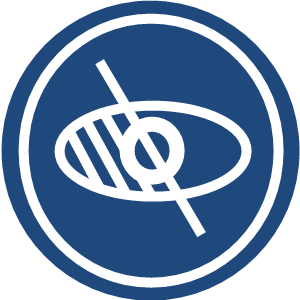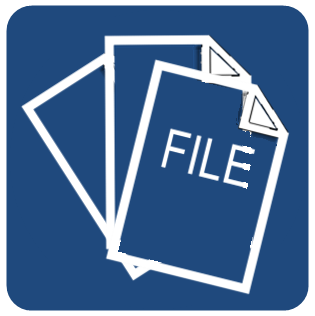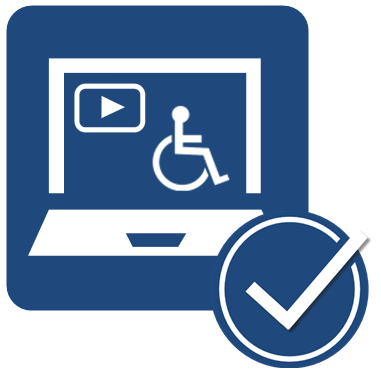Minimizing Barriers to Document Accessibility – SensusAccess: A Self-Service Tool
Kayla Charbonneau
Introduction

Screen readers are indispensable assistive technologies that empower individuals who are blind to interact with computers effectively. According to Momotaz et al. (2023), these tools audibly narrate visual content displayed on screens and offer alternative navigation options like keyboard shortcuts, thus removing the need for a mouse. Critical to their functionality is the use of alternative text, and manually inputted descriptions of images and graphics. This feature is pivotal in enabling blind users to access and understand visual information that would otherwise be inaccessible. By converting visual elements into meaningful auditory descriptions, screen readers ensure equitable access to digital content, effectively bridging the accessibility gap.
Momotaz et al. highlight that screen readers are crucial in enhancing independence and productivity for blind individuals in various domains, including education, employment, and daily life. These tools facilitate reading and navigation and enable users to interact with complex applications and websites independently. Moreover, they contribute significantly to inclusivity by allowing blind users to participate more fully in digital communication and information-sharing platforms. Screen readers represent a transformative technology that empowers individuals who are blind by providing them with the tools necessary to navigate and engage with the digital world on par with their sighted counterparts. Through alternative text and audible narration, screen readers make digital content accessible and comprehensible, thereby promoting equal opportunities and enhancing the overall quality of life for blind users.
Not All File Types are Created Equal
 For screen readers to effectively narrate text displayed on a screen, the content must be formatted using a digital language that these assistive technologies can interpret. Hypertext Markup Language (HTML) stands out as the format of choice for accessibility (Teaching and Learning, n.d.). HTML’s structured nature inherently supports compatibility with screen readers, requiring minimal additional effort to ensure files are readable. This structured format also enhances navigation capabilities through the use of keyboard shortcuts, providing a more efficient browsing experience for visually impaired individuals. Furthermore, HTML’s native application as a web browser ensures consistent and reliable rendering of content across different devices and platforms, maintaining accessibility standards universally.
For screen readers to effectively narrate text displayed on a screen, the content must be formatted using a digital language that these assistive technologies can interpret. Hypertext Markup Language (HTML) stands out as the format of choice for accessibility (Teaching and Learning, n.d.). HTML’s structured nature inherently supports compatibility with screen readers, requiring minimal additional effort to ensure files are readable. This structured format also enhances navigation capabilities through the use of keyboard shortcuts, providing a more efficient browsing experience for visually impaired individuals. Furthermore, HTML’s native application as a web browser ensures consistent and reliable rendering of content across different devices and platforms, maintaining accessibility standards universally.
PDF files, or Portable Document Format, are widely used in education but vary in their accessibility. According to Teaching and Learning (n.d.), there are three types of PDFs: unstructured, structured, and tagged. Among these, only tagged PDFs are optimized for accessibility. Tagged PDFs include markers in their code that enable screen readers and other assistive technologies to accurately narrate the text and navigate the document (Accessible PDF, 2019). However, creating accessible tagged PDFs requires careful tagging to ensure that all content, including headings, images, and tables, is correctly identified and described. This meticulous tagging process is crucial for ensuring that PDF documents are accessible to individuals who rely on assistive technologies for reading and comprehension.
Microsoft Word (2024) is a ubiquitous file format in education, yet its accessibility for visually impaired users poses significant challenges. Despite features like Styles for structuring content, which are often overlooked (Teaching and Learning, n.d.), Word’s underlying coding does not integrate seamlessly with screen readers. Unlike HTML, which is structured for accessibility, Word’s formatting can impede screen readers from effectively interpreting and narrating text. While authors can add alternative text to graphics in Word, this information is not accessible to screen readers within the Word application itself, limiting the utility of .docx files for visually impaired students and educators.
Guidelines and Regulations
 Regulating accessibility in higher education is crucial for ensuring that all students have equal opportunities to pursue and excel in their academic endeavors, regardless of their physical or cognitive abilities. Accessibility regulations not only uphold principles of equity and inclusivity but also foster a supportive environment where every individual can fully participate and benefit from educational experiences (VanderMolen, 2023). Accessibility policies ensure that campuses, facilities, and digital platforms are designed and maintained to accommodate diverse needs. By adhering to these standards, institutions eliminate barriers that could otherwise hinder students with disabilities from accessing educational resources and participating in activities on an equal basis with their peers.
Regulating accessibility in higher education is crucial for ensuring that all students have equal opportunities to pursue and excel in their academic endeavors, regardless of their physical or cognitive abilities. Accessibility regulations not only uphold principles of equity and inclusivity but also foster a supportive environment where every individual can fully participate and benefit from educational experiences (VanderMolen, 2023). Accessibility policies ensure that campuses, facilities, and digital platforms are designed and maintained to accommodate diverse needs. By adhering to these standards, institutions eliminate barriers that could otherwise hinder students with disabilities from accessing educational resources and participating in activities on an equal basis with their peers.
Accessibility for Ontarians with Disabilities Act
 The Accessibility for Ontarians with Disabilities Act (AODA) of 2005 is a crucial piece of legislation in Ontario. Its primary goal is to achieve accessibility for individuals with disabilities by setting standards and regulations that organizations and businesses must follow (accessiBe, 2024). The AODA outlines specific requirements and timelines for making various aspects of society accessible, including customer service, employment, information and communication, transportation, and built environments.
The Accessibility for Ontarians with Disabilities Act (AODA) of 2005 is a crucial piece of legislation in Ontario. Its primary goal is to achieve accessibility for individuals with disabilities by setting standards and regulations that organizations and businesses must follow (accessiBe, 2024). The AODA outlines specific requirements and timelines for making various aspects of society accessible, including customer service, employment, information and communication, transportation, and built environments.
By establishing these standards, the AODA aims to create a barrier-free Ontario, where people of all abilities can participate fully in all aspects of life. It mandates that organizations implement measures to identify, remove, and prevent barriers to accessibility. The AODA is not only about physical accessibility but also encompasses digital accessibility, ensuring that websites, software, and digital content are usable by everyone, including those with disabilities. This includes ensuring that information is available in accessible formats, and setting the World Wide Web Consortium’s (W3C, 2022) Web Content Accessibility Guidelines (WCAG) 2.0 Level AA as its minimum requirements.
Web Content Accessibility Guidelines
![]()
WCAG 2.0, or the Web Content Accessibility Guidelines 2.0, consists of four guiding principles that serve as the foundation for creating accessible web content. These principles are perceivable, operable, understandable, and robust (W3C, 2022). Perceivable means that information and user interface components must be presented in a way that users can perceive. This means providing alternatives for non-text content (such as images, audio, and video) and ensuring content is distinguishable (e.g., sufficient color contrast). Operable means that user interface components and navigation functionality must be operable. Users should be able to navigate and interact with the website using various input modalities (e.g., keyboard, mouse, touch) and sufficient time should be provided for users to read and use content. Understandable: involves making content readable and predictable, using clear language and consistent navigation, and providing assistance with errors and input validation. Finally, robust means that content must be robust enough that it can be interpreted reliably by a wide variety of user agents, including assistive technologies. This means using technologies that are compatible with current and future user agents, ensuring content remains accessible as technologies evolve. These principles form the basis for the detailed guidelines and success criteria outlined in WCAG 2.0, which are essential for developers, designers, and content creators to follow when aiming to make their web content accessible to people with disabilities.
SensusAccess
![]()
Achieving comprehensive accessibility in educational materials requires institutions and educators to adhere to WCAG guidelines and legal standards such as the AODA. Implementing tools like SensusAccess (2023) in post-secondary settings is crucial for overcoming barriers posed by inaccessible document formats, and ensuring compatibility with screen readers and other assistive technologies. By leveraging SensusAccess, institutions can transform various document types into accessible formats, thereby fostering an inclusive learning environment. This approach enables students with disabilities to access course materials effectively, promoting equal educational opportunities for all learners, regardless of their abilities. SensusAccess plays a pivotal role in enhancing accessibility by facilitating the conversion of documents into formats that support diverse needs, ultimately supporting a more equitable educational experience.
Capabilities
 SensusAccess (2023) is a specialized document remediation service tailored for educational institutions. It automates the conversion of documents across various file types, including audiobooks, e-books, digital Braille, digital large-print, and BeeLine Reader formats. The service addresses inaccessible document formats such as image-only PDFs, JPG images, Microsoft PowerPoint presentations, and LaTeX projects, transforming them into more accessible formats that facilitate easier navigation and comprehension. Moreover, SensusAccess offers language translation capabilities, allowing documents to be converted from one language to another, further enhancing accessibility for multilingual students and educators alike. By providing these functionalities, SensusAccess supports universities in creating an inclusive learning environment where all individuals, regardless of their abilities or linguistic backgrounds, can access educational materials effectively. This comprehensive approach not only promotes accessibility compliance but also improves the overall accessibility and usability of educational resources, contributing to a more equitable educational experience for diverse student populations.
SensusAccess (2023) is a specialized document remediation service tailored for educational institutions. It automates the conversion of documents across various file types, including audiobooks, e-books, digital Braille, digital large-print, and BeeLine Reader formats. The service addresses inaccessible document formats such as image-only PDFs, JPG images, Microsoft PowerPoint presentations, and LaTeX projects, transforming them into more accessible formats that facilitate easier navigation and comprehension. Moreover, SensusAccess offers language translation capabilities, allowing documents to be converted from one language to another, further enhancing accessibility for multilingual students and educators alike. By providing these functionalities, SensusAccess supports universities in creating an inclusive learning environment where all individuals, regardless of their abilities or linguistic backgrounds, can access educational materials effectively. This comprehensive approach not only promotes accessibility compliance but also improves the overall accessibility and usability of educational resources, contributing to a more equitable educational experience for diverse student populations.
Examples of Successful Integration
 One institution that has successfully implemented SensusAccess is McMaster University (Accessibility Hub, 2024). Their Accessibility Hub, affiliated with Library Accessibility Services, boasts an easy avenue for alternate media. This resource provides a straightforward process for converting documents into alternate formats, making resources more accessible to students with disabilities. SensusAccess plays a crucial role by allowing users to convert documents into formats such as audio, Braille, and digital text, thereby supporting diverse learning needs within the university community. McMaster’s use of this important tool is a testament to its commitment to accessibility and inclusivity in education. Other institutions that have integrated SensusAccess, such as Wilfrid Laurier University (Thomas, 2023), Toronto Metropolitan University (Toronto Metropolitan University Libraries, 2022), and Harvard University (Harvard University, n.d.), have similarly embraced the tool’s capabilities to enhance accessibility and inclusivity in their educational environments. These institutions’ adoption of SensusAccess underscores its effectiveness in facilitating compliance with accessibility standards and improving the educational experience for students with disabilities.
One institution that has successfully implemented SensusAccess is McMaster University (Accessibility Hub, 2024). Their Accessibility Hub, affiliated with Library Accessibility Services, boasts an easy avenue for alternate media. This resource provides a straightforward process for converting documents into alternate formats, making resources more accessible to students with disabilities. SensusAccess plays a crucial role by allowing users to convert documents into formats such as audio, Braille, and digital text, thereby supporting diverse learning needs within the university community. McMaster’s use of this important tool is a testament to its commitment to accessibility and inclusivity in education. Other institutions that have integrated SensusAccess, such as Wilfrid Laurier University (Thomas, 2023), Toronto Metropolitan University (Toronto Metropolitan University Libraries, 2022), and Harvard University (Harvard University, n.d.), have similarly embraced the tool’s capabilities to enhance accessibility and inclusivity in their educational environments. These institutions’ adoption of SensusAccess underscores its effectiveness in facilitating compliance with accessibility standards and improving the educational experience for students with disabilities.
Limitations
![]() As detailed in McMaster University’s SensusAccess guide (Accessibility Hub, 2024), the effectiveness of converting documents from one format to another hinges significantly on the quality of the original document. High-quality scanning is crucial as it directly impacts the accuracy of data transfer during the conversion process. Documents that are poorly scanned or lack sufficient resolution or clarity are prone to recognition errors (Thomas, 2023) when converted into alternative formats.
As detailed in McMaster University’s SensusAccess guide (Accessibility Hub, 2024), the effectiveness of converting documents from one format to another hinges significantly on the quality of the original document. High-quality scanning is crucial as it directly impacts the accuracy of data transfer during the conversion process. Documents that are poorly scanned or lack sufficient resolution or clarity are prone to recognition errors (Thomas, 2023) when converted into alternative formats.
Moreover, documents with poor contrast levels or conversion of files containing complex elements like mathematical symbols to text formats pose additional challenges. These factors can impede the accurate interpretation and conversion of content, potentially affecting the comprehensibility of the document for users relying on assistive technologies. Being that it is an automated tool, SensusAccess is not always accurate and may produce errors (Thomas, 2023).
Finally, testimonials about the use of SensusAccess from the perspective of the student and the instructor are lacking. Further research should be done to explore the user experience and flesh out any challenges that may arise. These may vary from challenges related to first-time use or large-scale use.
Conclusion
The integration of assistive technologies like tools such as SensusAccess plays a pivotal role in advancing accessibility standards in educational settings. Screen readers make educational content accessible to students, faculty, and university staff, but only so long as those documents can be transcribed by the screen reading program. SensusAccess is vital to supporting the use of screen readers by stakeholders with various visual disabilities. SensusAccess also aids in the adherence to legal frameworks such as the Accessibility for Ontarians with Disabilities Act and international standards like WCAG 2.0, which provide essential guidelines for fostering inclusive educational environments.
SensusAccess exemplifies a proactive approach to accessibility, automating the conversion of documents into accessible formats such as audiobooks, Braille, and digital text. Its capabilities extend beyond basic conversion, offering language translation and support for diverse file types, thereby catering to the varied needs of a multicultural and multi-ability student body. Successful implementations of SensusAccess at institutions like McMaster University highlight its role in facilitating compliance with accessibility standards and enhancing the educational experience for students with disabilities. Despite its benefits, challenges such as document quality and processing accuracy underscore the ongoing need for quality control and user awareness.
The continued advancement and integration of assistive technologies and accessibility tools are essential for realizing inclusive educational environments. By embracing these technologies and adhering to established standards, educational institutions can ensure that every student, regardless of ability, can fully participate in and benefit from educational opportunities. Through collaboration, innovation, and commitment to accessibility, post-secondary institutions can collectively foster a more inclusive society where diversity is celebrated and barriers are dismantled.
References
accessiBe. (2024). AODA compliance for documents – The ultimate guide. https://accessibe.com/blog/knowledgebase/aoda-compliance-for-documents
Accessibility for Ontarians with Disabilities Act, S.O. 2005, c. 11. https://www.ontario.ca/laws/statute/05a11
Accessibility Hub. (n.d.). McMaster University. https://accessibility.mcmaster.ca/digital-accessibility/sensusaccess/
Accessible PDF. (2019). What is a tagged pdf? Tagged PDF. https://taggedpdf.com/what-is-a-tagged-pdf/
Harvard University. (n.d.). SensusAccess: University disability resources. https://accessibility.harvard.edu/pages/sensusaccess
Microsoft (2024). Word. https://www.microsoft.com/en-us/microsoft-365/word
Momotaz, F., Ehtesham-Ul-Haque, M., & Billah, S. M. (2023). Understanding the usages, lifecycle, and opportunities of screen readers’ plugins. ACM Transactions on Accessible Computing, 16(2), 1–35. https://doi.org/10.1145/3582697
SensusAccess (2023). Welcome to SensusAccess. https://www.sensusaccess.com/
Teaching & Learning. (n.d.). Accessible file formats in school environments. SensusAccess. SensusAccess | Laurier Library. https://library.wlu.ca/research/resources/sensusaccess
Thomas, M. (2023). SensusAccess. SensusAccess | Laurier Library. https://library.wlu.ca/research/resources/sensusaccess
Toronto Metropolitan University Libraries. (2022). Accessible formats conversion tool (SensusAccess). Accessible Formats Conversion Tool (SensusAccess). https://library.torontomu.ca/services/disabilities/accessible-formats-conversion-tool/
VanderMolen, J. (2023). Survey of knowledge of ADA: Basic concepts, accessibility fundamentals – Disabilities, guidelines, and laws, web accessibility testing. Including Disability, (3), 148–158. https://doi.org/10.51357/id.vi3.239
W3C (2022). Web Content Accessibility Guidelines (WCAG). [Web page]. https://www.w3.org/WAI/standards-guidelines/wcag/
